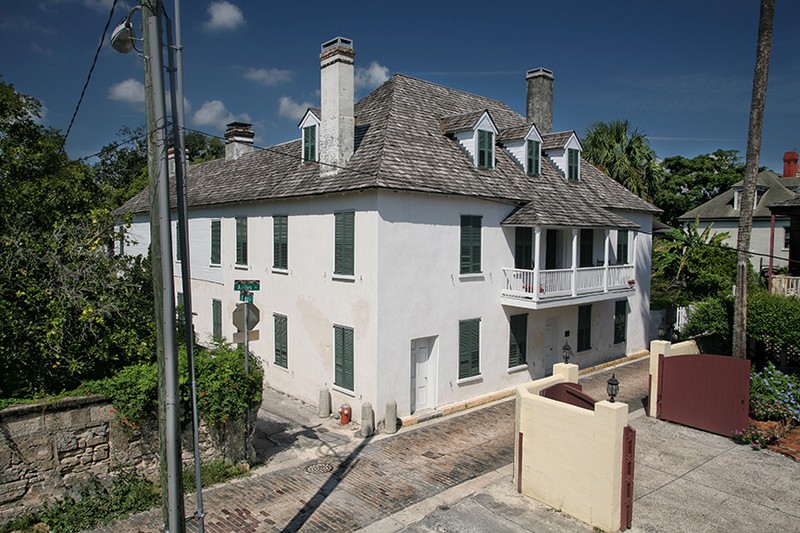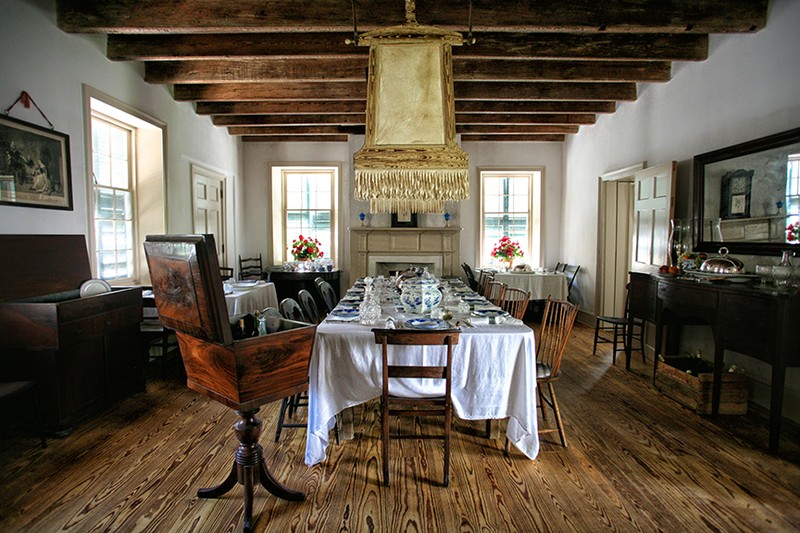Ximenez-Fatio House Museum
Introduction
Text-to-speech Audio
The Ximenez-Fatio House is one of St. Augustine's most interesting buildings. First constructed in the late 1700s, the house is one of the city's best examples of the Second Spanish Colonial period (1783-1821; the first one began in 1513 and ended in 1763 when the British gained control of the Florida territory). In addition to its age, architecture and well-preserved condition, the house is also important for women's history. In the 19th century it became a boarding house managed by women who earned the respect of guests, many of whom were wealthy elites from the northeast, and the community. The house is named after the first owner and builder of the original section, Andres Ximenez, and the last owner, Louisa Fatio. The house is a museum and was added to the National Register of Historic Places in 1973. It has been owned and operated by the The National Society of The Colonial Dames of America since 1939.
Images
The Ximenez-Fatio House Museum was originally built sometime in the late 18th century, during the Second Spanish Period (1783-1821).

View of the dining room

Backstory and Context
Text-to-speech Audio
Andres Ximenez operated a general store in the house (or an outbuilding), and also sold liquor and even had a pool table for public use. Sadly, he and his wife died in 1806; he father managed the house and took care of their children. The children sold the house to widower Margaret Cook in 1830. Her husband signed the papers giving her legal rights to conduct business in her name before he died, which was uncommon back then. Cook converted the house to a boarding house and hired a woman named Eliza Whitehurst to help manage it. Eliza died in 1838 and Margaret then sold it to Sarah Petty Anderson who would later hire Louisa Fatio in the 1840s. Louisa bought it in 1855 and operated the boarding house until her death in 1875.
Tourism in Florida increased after the 1819 Adams-Onis Treaty between the U.S. and Spain, which resulted in Spain finally ceding Florida. The new state attracted people from all over which increased demand for lodging. Even though Florida was now an American state, the native Seminoles continued to resist and people fled to boarding houses such as this one to escape the violence that occurred.
Tourism in Florida increased after the 1819 Adams-Onis Treaty between the U.S. and Spain, which resulted in Spain finally ceding Florida. The new state attracted people from all over which increased demand for lodging. Even though Florida was now an American state, the native Seminoles continued to resist and people fled to boarding houses such as this one to escape the violence that occurred.
Sources
Snodgrass, Dena. "The Ximenez-Fatio House." National Park Service, National Register of Historic Places. July 25, 1973. http://focus.nps.gov/GetAsset?assetID=cdba9e1a-c85f-466d-ae56-e6871a403dfd.
"Our Story." Ximenez-Fatio House Museum. Accessed October 16, 2016. http://ximenezfatiohouse.org/our-story/#prettyPhoto.
"Our Story." Ximenez-Fatio House Museum. Accessed October 16, 2016. http://ximenezfatiohouse.org/our-story/#prettyPhoto.
